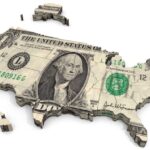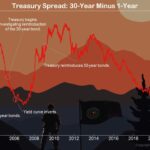When the best of the best economic modelers at the Bank of England asked whether or not a big jump in interest rates would collapse the country’s bond market, they investigated the question and made a determination. The answer, they thought, was no. It turns out, their predictions fell short. If the brains behind the Bank of England can’t get it right, how can the average investor? This is one reason you should never be an interest rate predictor. Greg Ip explains how the Bank of England got it so wrong, writing in The Wall Street Journal:
In 2018, the Bank of England investigated whether a big rise in interest rates would trigger a cascade of forced selling by bond investors, destabilizing the financial system. The answer was no, even if long-term rates rose a full percentage point in a week, which had never happened in records going back to 1990.
In the days surrounding the British government’s tax-cut announcement on Sept. 23, yields on British government bonds, called gilts, gyrated as much as 1.27 points in a single day as pension funds dumped bonds and closed out bond-linked derivatives positions to meet margin calls. The Bank of England was forced to step in and buy bonds to stem the selloff.
“The speed and scale of the moves in gilt yields was unprecedented,” the bank explained in a letter to Parliament. The refrain sounded familiar: the stock market crash of 1987, the near-failure of hedge fund Long-Term Capital Management in 1998, and the housing and mortgage crisis of 2007-09 were all precipitated by financial prices moving violently, by magnitudes outside historical experience.
This doesn’t mean they were chance events. In each case, the belief that such events were thought impossible caused investors to behave in ways that made those events inevitable. During the 2000s, the belief that home prices would never decline nationally drove a flood of money into houses, mortgages and related derivatives. The result was a massive, overleveraged bubble whose eventual demise sent home prices down and defaults up.
The British bond market debacle might be a sign of similar dynamics at work and another reason to expect structurally higher, more volatile real (inflation-adjusted) interest rates in coming years. Real 10-year gilt yields stood at 1.13% Wednesday, compared with minus 0.44% on Sept. 22, according to Barclays PLC. Real yields in the U.S. have also shot up.
Action Line: Don’t be an interest rate predictor with your portfolio. One way to help is by using a bond ladder. If you need help building a bond ladder of treasuries and individual bonds from blue-chip companies, let’s talk. In the meantime, click here to subscribe to my free monthly Survive & Thrive letter, and you’ll learn more about me and how I help American families improve their personal and financial security.
E.J. Smith - Your Survival Guy
Latest posts by E.J. Smith - Your Survival Guy (see all)
- Is Your Retirement Life a Mess? Let’s Talk - April 18, 2024
- Your Survival Guy Learns from Marie Kondo - April 18, 2024
- Don’t Be Left High and Dry - April 18, 2024
- April RAGE Gauge: Real Gold Prices - April 18, 2024
- This Is about Your Survival, Not Anyone Else’s - April 17, 2024















